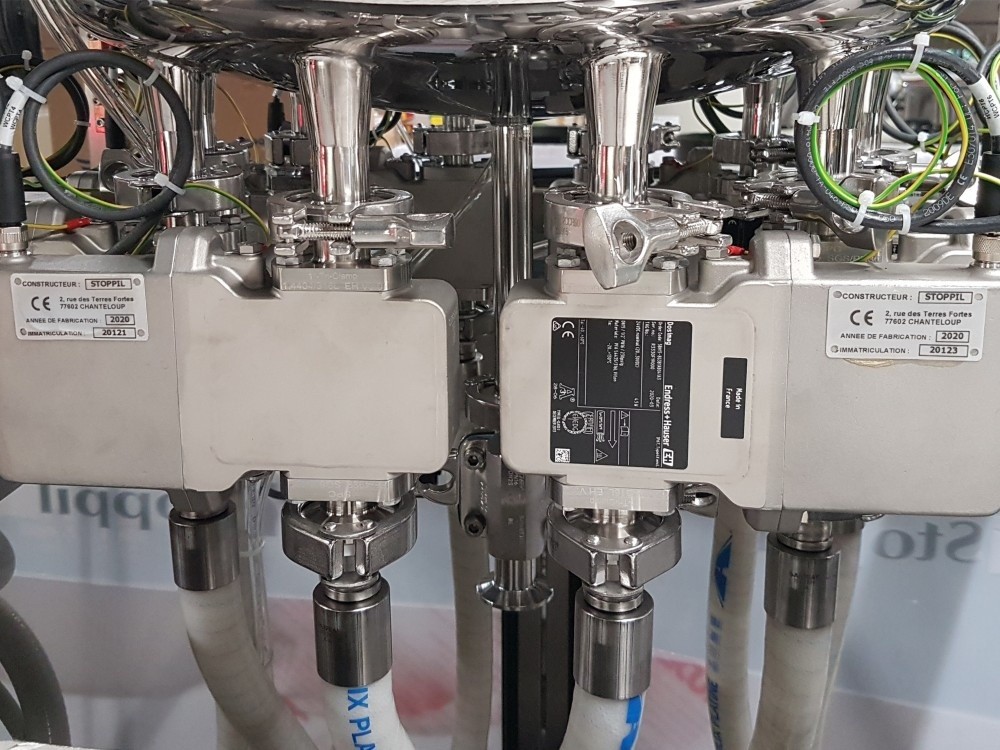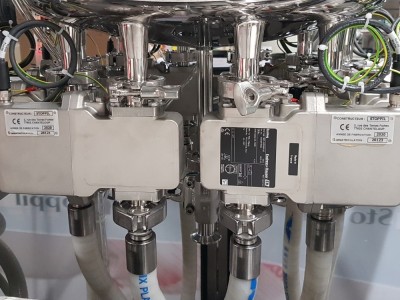The operating principles of the different flow meters

Stoppil uses three dosing principles to ensure the precision of its fillers.
Counting technologies used by Stoppil
Volumetric meters
The volumetric meters manufactured by Stoppil are oscillating rotary piston sensors made of stainless steel or PVDF. They can measure uncharged liquids up to 30,000 cps. Sensor accuracy +/- 0.5%.
The piston is kept tangent by its external face to the inner wall of the chamber and, by its internal face, to the outer wall of the center of the chamber by means of a roller placed in the axis of the chamber and in contact with the axis of the piston.
The chamber, the radial wall and the piston thus determine two groups of two measuring compartments so that, in each group (inside and outside the piston), one compartment fills while the other empties.
The cylindrical piston, with a slot and a double T section, moves in the cylindrical measuring chamber. The liquid enters the chamber and, by the pressure exerted, prints a piston rotation movement. The radial wall and the piston nipple guide it by making it determine the always equal partial quantities V1 and V2. The rotation of the piston is then transmitted by a magnetic drive through the wall, to a timer or a pulse transmitter.
Mass flow meter
Mass flow meters are static sensors whose principle is based on a measurement of the mass according to the so-called Coriolis principle. They can measure all types of liquids. Sensor accuracy +/- 0.2%.
One or two tubes are vibrated by an exciter. When a fluid passes through these tubes and under the effect of Coriolis forces, a phase shift can be observed between the electrical signals of two electrodynamic sensors positioned at the inlet and outlet of the measuring section.
This phase shift is directly proportional to the mass flow rate and independent of the density. With this measuring method, temperature, pressure, viscosity, conductivity and flow profile have only a negligible influence on the measuring principle.
Electromagnetic flowmeter
Electromagnetic flowmeters are static sensors whose principle is based on Faraday's law. They can measure liquids with a minimum conductivity of 5 µs/cm. Sensor accuracy +/- 0.3%.
In the case of an electromagnetic flowmeter, it is the conductive liquid flowing through the sensor that represents the conductor moving in the magnetic field. The induced voltage is proportional to the flow rate. The flow volume is determined by multiplying the speed by the tube cross-section.
The magnetic field is generated by an alternating direct current. With the patented circuit, this guarantees a measurement that is independent of the product and insensitive to suspended solid particles.
No adjustment is necessary in the event of a product change.


